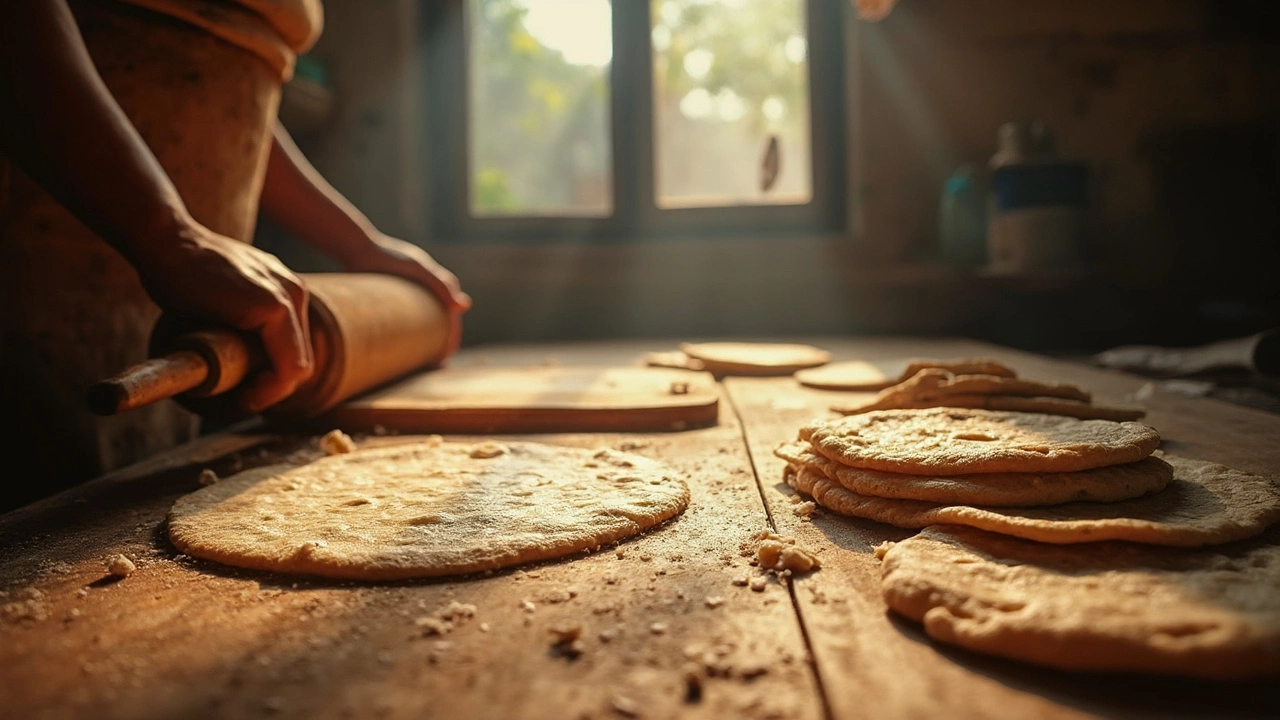Roti Thickness: Mastering the Perfect Chapati
When working with roti thickness, the measurement of dough roundness that decides how quickly heat travels through a flatbread. Also known as chapati depth, it influences puff, texture, and cooking time. Roti, a staple Indian flatbread made from whole‑wheat flour relies on this factor to achieve that signature puff. Adding baking soda, a mild leavening agent that alters dough elasticity or oil, fat that softens gluten strands and reduces friction at the right stage can change the outcome dramatically. Understanding roti thickness is the first step toward consistently soft, fluffy rotis.
Dough hydration, the water‑to‑flour ratio that determines dough pliability is tightly linked to thickness. A slightly wetter dough rolls out thinner without tearing, allowing heat to reach the center faster, which speeds up puff formation. Conversely, a dry dough tends to stay thick, leading to uneven cooking and a dense texture. The amount of oil you mix into the dough also matters: oil lubricates gluten, letting you roll a thinner sheet without snapping. This means you can achieve a delicate thickness while retaining softness. If you skip oil or add it too late, the dough resists flattening, resulting in a thick, hard roti that won’t puff properly.
Key Factors That Affect Roti Thickness
First, rolling technique sets the baseline. Pressing gently and rotating the rolling pin ensures an even circle; uneven pressure creates spots that stay thicker and hinder puffing. Second, baking soda or baking powder, when used sparingly, creates tiny gas bubbles that make the dough more forgiving, helping you roll it thinner without cracking. Third, resting time after kneading allows gluten to relax, which reduces resistance and lets the dough spread to a finer thickness. Finally, cooking temperature is a hidden player: a very hot tawa (griddle) forces steam to form inside a thin roti quickly, causing it to puff; a lukewarm surface lets the roti dry out before puffing, especially if the thickness is too great.
Putting these pieces together, you can see how roti thickness intersects with dough hydration, oil timing, and leavening agents. The relationship can be expressed as simple triples: "Roti thickness influences puffing," "Oil addition reduces dough thickness," and "Baking soda changes dough elasticity, which helps puff." By adjusting each factor, you gain control over the final texture—soft, airy rotis versus tough, under‑cooked discs. Below you’ll find a curated set of articles that dive deeper into each of these aspects, from troubleshooting flat chapatis to mastering the perfect oil‑in‑dough technique. Explore the tips, tricks, and science behind every step, and start rolling thinner, puffier rotis today.

Does Size Matter? How Roti Thickness Affects Calories
Ever wondered if the thickness of your roti changes the calorie count? Get the lowdown on how roti size influences the nutritional value of your meal. Learn just how much calories in 1 roti can vary with thickness, and how adding ghee or pairing it with sabzi can change everything. Explore this practical guide to make informed choices in your everyday diet.